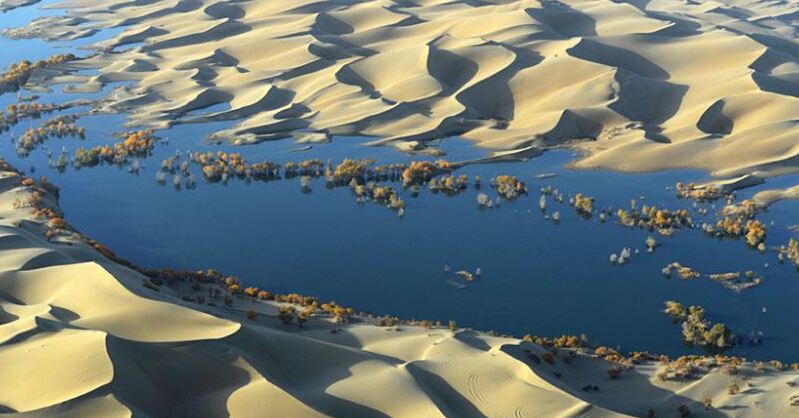Desert Dig Uncovers Caches of Missing CO2
2015-08-13

Desert aquifers, fed by rain, surface and irrigation waters, hoard hundreds of billions of metric tons of carbon pulled from the atmosphere, new research suggests. The irrigation water flushes the carbon deep underground, report researchers who studied China’s Taklamakan Desert. (Image by LI Yan )
The wet undersides of deserts may stash as much as a trillion metric tons of climate-altering carbon, more than stored in all land-based plants, new research suggests.
Human activities such as burning fossil fuels spew carbon dioxide into the atmosphere. Scientists, however, can’t account for where as much as 30 percent of this CO2 ends up.
“We’ve found a carbon sink in the most unlikely place,” says Yan Li, an ecologist at the Chinese Academy of Sciences in Urumqi. Up to a fifth of this missing carbon may end up beneath irrigated Earth’s deserts, Li and colleagues propose online July 28 in Geophysical Research Letters. In arid regions, water from agricultural irrigation can flush carbon into underground aquifers, reducing atmospheric CO2 concentrations and combating greenhouse warming, the researchers report. (Science News)
Contact
LI Yan
Xinjiang Institute of Ecology and Geography, Chinese Academy of Sciences
E-mail: liyan@ms.xjb.ac.cn



